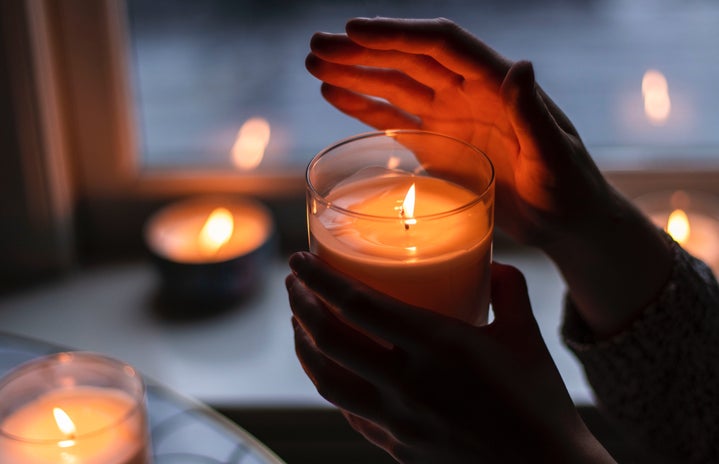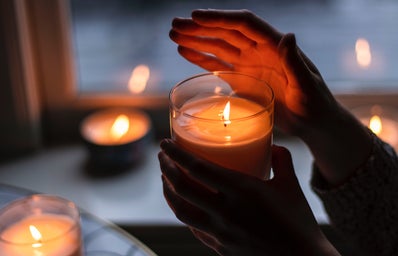don’t be fooled by the sugar skulls, this respected holiday isn’t about spooks, its about remembering souls
Contrary to popular misconceptions, the Day of the Dead is not “Mexican Halloween.” Although the holiday may share some aesthetics with Halloween, it’s more related to the ancient holiday of All Saints Day or All Souls Day. Día de Los Muertos celebrates those who have passed and welcomes their souls back for a mini visit. The border between the real world and the spirit world (heaven, afterlife, etc.) is dissolved briefly for them to visit their families and enjoy the celebration of their lives.
Día de Los Muertos, or “Day of the Dead,” is a Mexican holiday that celebrates the living and the dead reuniting. It is a dedication to the deceased where families can come together to create ofrendas (offering altars) to honor their family members and remember them by eating or enjoying their favorite things.
Dating back approximately 3,000 years and originating in the Aztec empire, this traditional holiday has managed to withstand the test of time. Even after the Spanish conquered the Aztecs in the 16th century, the celebration has flourished and spread to different regions, allowing for the integration of different religions to put their own stamp on the holiday. Eventually, the Catholic Church moved indigenous celebrations that honor the dead to Nov. 1 and Nov. 2 coinciding with All Saints Day. Today, Día de Los Muertos continues to evolve from the All Saints Day traditions which consist of going to mass and visiting cemeteries with flowers and offerings. Now, participants can even partake in a variety of festivities, as seen in the Americas, like parades, costumes, dancing and much more.
How it is Celebrated
The first day of Día de Los Muertos starts at midnight on Nov.1, which is when the ofrendas are typically built. This day is also traditionally dedicated to the children who have passed, known as Dia de Los Angelitos (Day of the Little Sprits, also known as, Spirits of the Children). The night is full of remembering the children in a lighthearted way, with laughs and good memories being told while the ofrendas sit decorated with personalized sugar skulls that are labeled with the child’s name, and adorned with their favorite snacks, candies and toys.
On day two, Nov. 2, the day is spent preparing the adult ofrendas and offerings for the pass over, known as Día de Los Difuntos (Day of the Deceased, or in this case, Spirits of the Adults). On this day, the families celebrate the lives of the adults who have passed and, like Día de Los Angelitos, the night is full of joy rather than grief. Día de Los Difuntos traditionally have ofrendas decorated with pictures, alcohol, pan de Muerto (Bread of the Dead – a sweet dessert used as offerings), their favorite snacks and typically play the individuals’ favorite music.
Finally, around noon on Nov 2., the grand finale and public celebration of Día de Los Muertos begins. This is when people attend parades and visit cemeteries to clean the headstones and bring some of their offerings from their ofrendas (marigolds, gifts, sugar skulls, etc.) to the person’s grave.
*It’s important to note that you can celebrate all family members on both days. And, although there are traditions, anyone can celebrate the way they feel fits best for them, their loved ones and those who have passed.
Día de Los Muertos Across Cultures and Countries
Even though Día de Los Muertos is known as a Mexican holiday, there are other cultures and countries that use Nov.1 and Nov. 2 to gather and pay tribute to their deceased loved ones. For some, it is a day of festivities, and for others, it is a day to mourn. But, the one thing that connects all of these places and celebrations together is the fact that everyone looks forward to taking the time to honor the lives of those who are no longer present in the physical world. Here is a mini highlight of a couple of holidays around the world that celebrate those who have lost their lives, as Dia de Los Muertos does.
In Mexico, it is typical for the ofrenda to be built over the gravesite of the loved ones (since their graves are usually public/never close). But in the United States, graveyards are usually privately owned and/or closed off in the evening hours, so most families decide to build their ofrendas in the house, have parades, such as the Marigold parade in Albuquerque, or attend local activities including art exhibits, dance nights, food truck runs and poetry readings.
Ecuador celebrates El Día Los Difuntos (Day of the Deceased) on Nov. 2, as well. It is an upbeat day of families and friends gathering to remember their departed relatives and enjoy drinks & treats, specifically Guagua de Pan – a traditional Ecuadorian pastry made in the shape of a baby (in a cute way, not creepy).
Peru also celebrates this holiday, but for them, it is a two-part celebration similar to Día de Los Muertos. The first day focuses on having a feast consisting of the departed’s favorite foods and then a cemetery visit at the end of the day.
The Philippines celebrates Undas (All Saints’ Day), which is spent enjoying a meal with family and is a tradition for Filipinos to visit their loved ones and celebrate with each other. It is an especially important holiday for those who don’t live near their families because it allows them to gather and reflect on their lives, along with the memories of their loved ones. Similar to many of the Día de Los Muertos traditions, Filipinos also use this time to clean up the cemeteries, place flowers and light candles around their relative’s graves.
All in all, an important takeaway from this piece is to realize that Día de Los Muertos is not a “Mexican Halloween.” There are a lot more traditions and emotions that go into the holiday in different places around the world. Not acknowledging this and isolating it to one culture, race and ethnicity, does more harm than good.
*And while some of this might sound a little out there – the afterlife, spirits and more – I have made ofrendas in the past with various alcoholic drinks and/or coffee for my family members who have passed away, and came back to see the shot glasses and cups EMPTY the next day. So, don’t be fooled. Many of you have seen Disney’s “Coco”, and even though it is a cartoon, the events it is based on are all very possible. Hopefully, my ancestors will enjoy my mini ofrenda in my dorm this year and will pay me a visit in their time.


